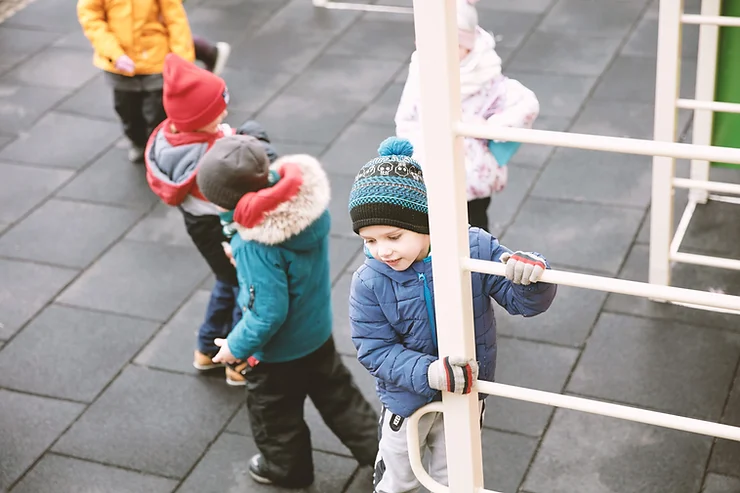When a child or young person exhibits sexualised behaviours, it can be challenging and confronting. Individuals and organisations may not know how to respond and may be concerned that they do not have the requisite skills or knowledge to be able to manage the concerns and ensure the safety of children within the organisation.
The Royal Commission into Institutional Responses to Child Sexual Abuse (Royal Commission) found that approximately 16% of all survivors who made submissions to the Royal Commission were abused by another child or young person. Organisations often struggle to respond to these concerns and balance the competing needs of the children, parents and staff members involved.
It is normal to be shocked, concerned or worried when confronted with a child or young person who has exhibited sexualised behaviours. However it is important to ensure that the organisation is equipped to deal with these concerns appropriately and ensure that children are safe from harm, both to themselves and others.
What are Sexualised Behaviours?
All children at some point in their life may exhibit sexualised behaviours. It is important when considering sexualised behaviours, we do so from the perspective of what is developmentally appropriate and when behaviours are of concern.
From the moment a child is born they will engage in sexualised behaviours as part of their own curiosity, exploration and learning to support their growth and development. As a child grows, sexualised behaviours may lead to further exploration and experimentation as they learn about their body and learn about the bodies of people around them. This kind of exploration is developmentally normal and is considered age-appropriate.
Age-appropriate sexualised behaviours in children can include touching their own genitals, being naked, showing people their genitals, touching other children or familiar adults, telling dirty jokes, and mimicking observed behaviour such as kissing and hugging. As a child enters adolescence age-appropriate sexualised behaviours may include masturbation, intercourse, flirtatious behaviour and intimacy with other young people.
When are sexualised behaviours a cause for concern?
Some children or young people may exhibit problem sexualised behaviours which may pose a risk to themselves or others. Sexualised behaviours are considered problematic and harmful when it involves persistent or chronic behaviours after being told to stop, forcing another child to engage in sexual activities or play, touching the genitals of unknown adults, engaging in sexual acts such as oral sex or penetration, having advanced sexual knowledge for their age, or having an interest in pornography. In adolescence, problematic sexual behaviour can include any behaviour that is coercive, abusive, persistent or forced and is a violation of another person’s privacy, body and rights. Problematic sexualised behaviours may be a single incident or a pattern of incidents.
Problematic sexualised behaviours can occur for a number of reasons. Sexualised behaviours may be an Indicator of Harm (see our previous article on Indicators of Harm here), as a result of experiencing or witnessing trauma, family violence, exposure to parental substance use, chronic lack of parental supervision, or abuse including sexual abuse. While this can be a key reason a child is displaying problem sexual behaviour, such behaviours may also be a result of a child or young person living with disability or developmental issue, which can impact their understanding of what is and isn’t appropriate. Such behaviour can also be as a result of a child or young person having mental health concerns, substance use issues or other issues that impact their overall safety, stability, sense of self and security.
It is important to remember that not all children who exhibit sexualised behaviours, even serious sexualised behaviours, go on to engage in sexual offending as adults. Most children who undergo therapeutic treatment have excellent outcomes.
Duty of Care
Organisations working with children have a duty of care to ensure the safety and wellbeing of all children within the organisation. Organisations are expected to take all reasonable steps to protect children and young people from harm. The current Child Safe Standards and National Principles for Child Safe Organisations provide direction to organisations to provide a Safe Space for the children and young people under their care. An organisation should have policies and procedures in place to support staff to respond appropriately if concerned about a child or young person’s welfare, wellbeing or safety.
A key component to ensuring an organisation complies with its duty of care is through risk mitigation. In order to effectively mitigate risk, organisations should:
- Train Staff to understand the differences between age-appropriate and problematic sexual behaviour through child safety training
- Ensure policies and procedures are in place to provide clear expectations to staff about child safety and reporting obligations
- Safeguard children by ensuring that appropriate supervision is in place when there is a known risk.
- Comply with its reporting obligations, including to relevant state Child Protection authorities and Police when a child exhibits sexualised behaviours which causes harm to other children or themselves
- Undertake systemic review of any critical incidents relating to sexualised behaviours to minimise further risk
Responding to problem sexualised behaviours in children is an essential demonstration of an organisation’s duty of care to children and young people.
How can Safe Space Legal help?
The team at Safe Space Legal has extensive experience in working with organisations to safeguard children and young people from harm by providing child safety training, reviewing and drafting policies and procedures, conducting investigations and providing advice on risk mitigation and systemic issues, to support organisations in adhering to their legal obligations and providing assistance and support to respond to child abuse allegations and concerns.
Contact [email protected] or call 03 9124 7321 to organise a complementary discussion in relation to your organisation’s child safety and safeguarding needs.

